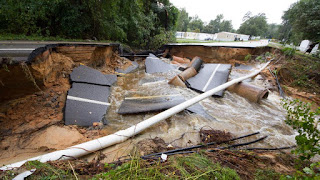Dutch Freighter ‘Flinterstar’ Sinks After Collision With LNG Carrier – PHOTOS
October 6, 2015 by Mike Schuler
A Dutch freighter has sank after colliding nearly head on with the Marshall Islands-flagged LNG carrier Al-Oraiq in the North Sea off Belgium on Tuesday morning.
All 12 crew members from the freighter, named Flinterstar, have been rescued. The crew members were rescued from the cold North Sea, including one person who was reportedly suffering from hypothermia, according to a Coast Guard spokesperson.
Photos of the Flinterstar show partially sunk, resting on a sandbank in calm seas and clear visibility. Dutch ship owner Flinter has confirmed that the ship sank, the crew is safe and the vessel is ‘stable’. A small oil sheen has been reported. An AIS replay of the collision (video below) shows the ships collided nearly head on.
“At this time, we are talking to salvage companies together with insurance to decide how the vessel will be salvaged,” Flinter said in a statement.
The 122,000 DWT Al-Oraiq was also damaged, but was able to continue to its destination of Zeebrugge, Belgium with the help of a tug.
The 129 meter Flinterstar was built in 2002 and is flagged in the Netherlands. The vessel had just departed Antwerp bound for Bilbao, Spain when it collided with the Al Oraiq about 16 miles (10 km) from the coast.
Flinter’s fleet consists of more than 50 vessels under its ownership or control. Most are multi-purpose ships ranging in sizes up to 11,000 DWT.
The AIS recreation of the collision from Vessel Finder:











































